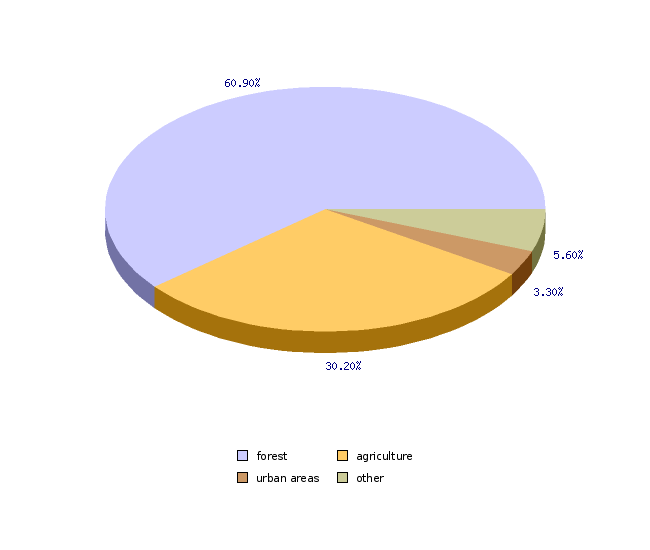-
-
-
-
-
-
-
-
Tools and collections
- Environmental atlas
- EIONET in Slovenia
- Environmental indicators
- IED devices
- Endangered species
- IS-waste

-
-
Tools and collections
- Environmental atlas
- EIONET in Slovenia
- Environmental indicators
- IED devices
- Endangered species
- IS-waste

[VD16] Water protection areas

Key message

Water protection areas cover 345,000 ha or 17% of the territory.
Charts
RABA, Ministry of Agriculture and the Environment, 2013; Water protection areas, Slovenin Environment Agency, 2013
| average 2002 - 2012 | ||
|---|---|---|
| forest | % | 61 |
| agriculture | % | 30 |
| urban areas | % | 3 |
| other | % | 6 |
Comment
Water protection areas comprise almost one fifth, or about 345,000 hectares of the area of Slovenia, of which more than 7,000 hectares fall under the
strictest protection regime.
Water protection areas are protected by municipal ordinances and government decrees. They have been designated with a view to protecting water bodies which
are used, or intended to be used, for the public supply of drinking water against contamination or other types of pollution that might affect the
wholesomeness of water or its quantity.
The size of water protection areas must be designated, so that the envisaged protection measures effectively ensure the long-term sustainability of water
quantity and quality of the water resource concerned. Depending on the distance and inflow time to the catchment area, water protection areas are divided
into three-degree protection regimes.
Most surfaces in water protection areas are covered by forest, followed by agricultural land, urban land and other surfaces. Changes in the structure of
land use within water protection areas took place in the 2002-2013 period, but were not extensive. Forest areas increased (by 1.3%), and urban areas (by
2.3%), while agricultural land decreased by 1,228 ha, or 1.2%). Less than half of agricultural land is covered by permanent grassland and pasture. Fields
account for 36% of the surface of water protection areas, which are significantly decreasing in area, mainly on account of grassland and pastures. Less use
of pesticides and fertilisers has resulted in a less contamination of groundwater from grassland and pastures. With regard to preserving the cultural
landscape in water protection areas, the share of overgrown agricultural land decreased by 31.3%. However, the area of perennial crops increased by 1.9% in
the 2002–2011 period, which usually entails a relatively large consumption of plant protection products.
The increase in the area of urban land in water protection areas is relatively small (by 2.3%), but in terms of water pollution, this can be regarded as an
unwelcome phenomenon. In future, the increasing urbanisation is expected to come to a halt, in particular in the immediate vicinity of catchment areas (the
strictest water protection regime), since the legislation regulating these areas is very strict.
Related indicators
Stojan Kranjc, Urška Kušar, Slovenian Environmant Agency







